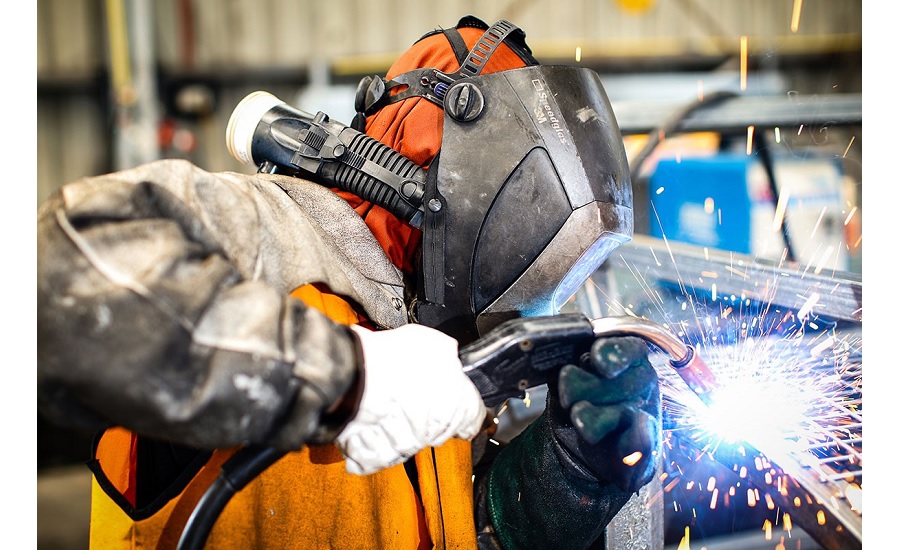Understanding Welding WPS Specifications: Best Practices and Techniques for Top Quality Welds
In the world of welding, mastering Welding Treatment Requirements (WPS) requirements is a crucial component that straight affects the high quality and integrity of welds. Abiding by these requirements ensures uniformity and reliability in welding end results. Nevertheless, achieving quality in welds goes past simply understanding the criteria; it involves executing best techniques and methods that raise the craft to a degree of accuracy and skill that distinguishes the average from the exceptional. As we browse through the ins and outs of welding WPS standards, discovering key insights and techniques for achieving top-tier welds will certainly be paramount for welders seeking to succeed in their craft and create welds that stand the examination of time.
Understanding Welding WPS Specifications

Recognizing WPS criteria is important for engineers, welders, and assessors entailed in welding operations. By complying with WPS standards, welders can produce welds that fulfill the called for mechanical buildings and architectural integrity. Assessors depend on WPS documents to confirm that welding procedures are being adhered to properly which the resulting welds are of excellent quality. Designers utilize WPS standards to create welding procedures that make sure the resilience and integrity of bonded structures.

Necessary Devices for High Quality Welds
Grasping welding WPS requirements is vital for welders to efficiently utilize the vital tools required for producing quality welds. Among one of the most critical devices for high quality welds is a welding device. The kind of welding machine required relies on the welding process being used, such as MIG, TIG, or stick welding. Welding headgears are likewise important to safeguard the welder's eyes and face from sparks, warmth, and UV radiation. In addition, welding gloves made of heat-resistant and sturdy products secure the hands from burns and injuries. Clamps and magnets aid hold the work surfaces together firmly during the welding process, making certain exact and precise welds. Cable brushes and chipping hammers are crucial for cleaning the weld joint Get More Info prior to and after welding to eliminate any contaminations that can affect the top quality of the weld. Finally, a gauging tape and angle mill are beneficial tools for making sure appropriate positioning and preparing the work surfaces for welding.
Trick Techniques for Welding Success
To attain welding success, one need to grasp the crucial methods important for producing high-grade welds. Keeping a steady welding and a stable hand position throughout the procedure is crucial to find out here accomplishing precision and uniformity in the welds. By grasping these essential techniques, welders can boost the top quality of their work and achieve welding success.
Ensuring Compliance With WPS Requirements

In addition, preserving comprehensive records of welding parameters, tools calibration, and examination results is critical for demonstrating conformity with WPS standards. By carefully sticking to WPS standards, welders can make sure that their work meets the needed high quality levels and adds to the general success of the welding project.
Troubleshooting Common Welding Issues
When confronted with usual welding problems, recognizing the source is crucial for reliable troubleshooting. One common problem is the visibility of porosity in welds, typically triggered by impurities such as corrosion, moisture, or oil. To resolve this, guaranteeing correct cleansing of the base metal prior to welding and using the right shielding gas can dramatically decrease porosity. An additional issue regularly experienced is lack of fusion, where the weld stops working to appropriately bond with the base product. This can come from inadequate warm input or inappropriate welding method. Changing specifications such as voltage, cable feed speed, or take a trip speed can assist boost fusion. In addition, distortion, cracking, and spatter Recommended Reading are typical welding challenges that can be reduced via proper joint preparation, regular heat control, and choosing the ideal welding consumables. By thoroughly comprehending these usual welding issues and their root triggers, welders can properly troubleshoot problems and attain premium welds.
Final Thought
In conclusion, understanding welding WPS standards needs a detailed understanding of the standards, making use of crucial devices, and executing vital methods for successful welds. Guaranteeing compliance with WPS standards is important for creating quality welds and avoiding common welding concerns. By adhering to ideal strategies and methods, welders can accomplish dependable and constant outcomes in their welding projects.
In the world of welding, grasping Welding Treatment Specification (WPS) criteria is a vital element that directly affects the top quality and stability of welds.When delving into the realm of welding practices, an essential facet to comprehend is the relevance and complexities of Welding Treatment Spec (WPS) criteria. WPS criteria provide a comprehensive standard for welding procedures, making certain uniformity, quality, and safety in the welding process. The type of welding equipment needed depends on the welding process being used, such as MIG, TIG, or stick welding.Achieving welding success with the mastery of vital methods necessitates an extensive understanding and adherence to Welding Procedure Spec (WPS) requirements.